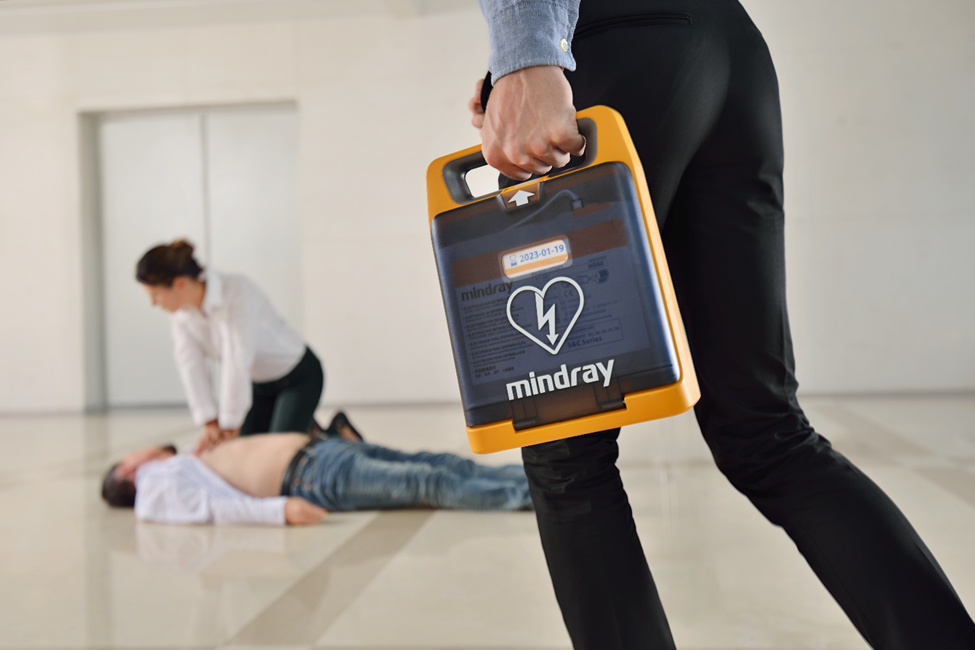
The heart is one of the most important organs of the human body. It is a life-sustaining organ that pumps blood around our body, thus delivering oxygen and other necessary nutrients to our cells while removing waste products. The electric system initiates each heartbeat by creating a signal that triggers the heart to pump, and these electric signals control the rhythm and rate of the heartbeat. Generally speaking, the heart cooperates with the body in an appropriate rhythm. However, medical procedures are required in emergencies where the heart does not function normally. Defibrillation proves to be one of the most effective and prevalent techniques. To perform defibrillation, one needs to use the automated external defibrillator (AED) to analyze the patient’s heart rhythm. In this article, we will introduce defibrillation in detail and the importance of the AED unit.
Purpose of defibrillation
Defibrillation, as previously said, is a life-saving method that delivers electric shocks to the heart to restore normal heart rhythm after a cardiac arrest. Many people may mistakenly perceive AED as a device to reboot the heart right after it stops working. In reality, AED temporarily stops the heart from beating abnormally and resumes its proper function, thereby enhancing the survival rate by 60-70 percent. [1]
Why is Early Defibrillation important?
Cardiac arrest is a life-threatening medical condition that claims a life within minutes. Normal electrical impulses are disrupted during cardiac arrest, disabling blood and oxygen circulation gradually. Upon sudden cardiac arrest, if there are no interventions, the patients are highly likely to die within minutes before the ambulance arrived. [2]
But things can be different when AED defibrillation comes to play. In receiving high-quality CPR and AED shocks in the first place, the survival rate improves significantly, rendering rapid defibrillation the most efficient way to save a person from a sudden cardiac arrest. This emphasizes the importance of automated external defibrillation and the technology of rapid shock delivery, especially since ambulance services need certain response times. For example, the UK ambulance needs around seven minutes [3] to respond to life-threatening illnesses or injuries, and most ambulances in Australia require more than 15 minutes.[4] So, it is critical to explore other treatments to save the patient.
AED: fastest treatment technology
On-site AED units can deliver emergency aid immediately. AED units are one-of-a-kind gadgets specifically created to lessen the number of people who die from life-threatening cardiac arrests.
1. User-friendliness and easiness
Do not worry if you have no prior experience or knowledge of the defibrillation procedure; anybody may use the gadget. With animated coaching and audio prompts, ResQNaviTM technology walks you through the rescue procedures. It ensures the user learns how to utilize the AED machine without trouble so that the patient receives early defibrillation in no time.
2. Higher energy
Higher energy is advised to boost defibrillation efficiency. AED units, featuring the 360J biphasic technology, provide a high energy output to cover SCA patients with various impedances.
3. Reliable and durable
AED devices are put through rigorous testing to ensure reliability and durability. The gadget features a 1.5-meter drop test and IP55 water and dust resistance rating, making it appropriate for any situation. In addition, both their pads and battery have a 5-year shelf-life, making them durable to be used for a long time.
4. Portable
The device is compact and portable. You can take it wherever you go. With this device, you do not have to worry about cardiac arrests, as you could easily handle them with the powerful device anywhere, anytime.

